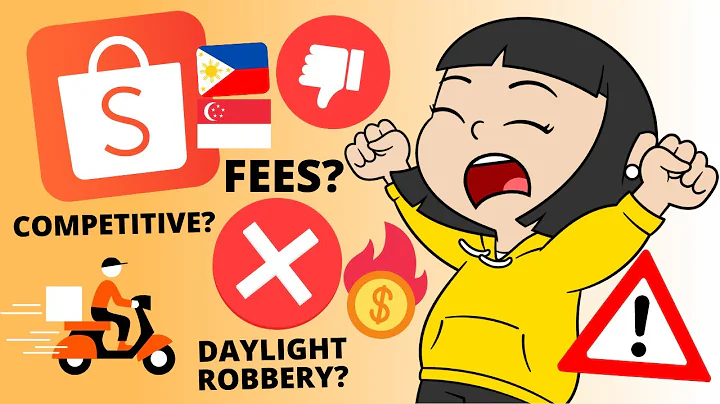Mastering Returns & Refunds in Dropshipping
Table of Contents
- Introduction
- Importance of Understanding Returns and Refunds in dropshipping
- Building Strong Relationships with Suppliers
- 3.1 Supplier Agreements and Return Policies
- 3.2 Notifying Customers about Non-Returnable Products
- Handling Returns: Partial Refunds and Customer Satisfaction
- 4.1 Offering Partial Refunds for Minor Issues
- 4.2 Adapting Partial Refunds based on Profit Margins
- Collaborating with Suppliers for Damaged or Defective Products
- 5.1 Requesting Replacement Parts
- 5.2 Requesting Credits for Future Purchases
- Updating Website Descriptions and Customer Feedback
- 6.1 Proactive Measures to Prevent Return Issues
- 6.2 Utilizing Feedback to Update Product Descriptions
- Dealing with Customers Insisting on Returns
- 7.1 Resolving Customer Disputes with Minimal Impact
- 7.2 Coordinating Return Shipping with Suppliers
- Conclusion
Returns and Refunds: A Crucial Aspect of Dropshipping
Returns and refunds are an essential consideration for anyone engaged in the dropshipping business. As an online retailer, understanding how to effectively manage returns and refunds is vital for maintaining customer satisfaction and a thriving e-commerce business. This article will provide valuable insights on building strong relationships with suppliers, offering partial refunds for customer satisfaction, collaborating with suppliers for damaged or defective products, updating website descriptions based on customer feedback, and dealing with customers insisting on returns. By following these guidelines, dropshippers can effectively handle returns and refunds, minimize financial impact, and enhance their online reputation.
Introduction
Dropshipping has become a popular business model in the e-commerce world, offering entrepreneurs the opportunity to run their own online stores without the hassle of managing inventory or fulfilling orders. However, one aspect of dropshipping that often causes uncertainty for entrepreneurs is how to handle returns and refunds. In this article, we will explore the various strategies and best practices for effectively managing returns and refunds in the dropshipping industry.
Importance of Understanding Returns and Refunds in Dropshipping
Returns and refunds can significantly impact the success of a dropshipping business. Customers expect a hassle-free experience when purchasing products online, including a clear return policy and a straightforward refund process. By understanding the importance of handling returns and refunds efficiently, dropshippers can build trust with their customers and foster long-term relationships.
Building Strong Relationships with Suppliers
Building strong relationships with suppliers is crucial when it comes to effectively managing returns and refunds. By establishing clear agreements and understanding each supplier's return policy, dropshippers can navigate the return process seamlessly.
Supplier Agreements and Return Policies
When working with suppliers, it is essential to familiarize yourself with their return policies. Most suppliers will have specific guidelines regarding returns, including the timeframe for returns and the responsibility for return shipping costs. It is crucial to communicate with suppliers and ensure that their return policies align with your business's values and customer expectations.
Notifying Customers about Non-Returnable Products
In some cases, suppliers may have products that are not eligible for returns. It is vital to clearly communicate this information to customers to avoid misunderstandings and potential conflicts. By including disclaimers or highlighting non-returnable products on your website, customers will be aware of any restrictions before making a purchase.
Handling Returns: Partial Refunds and Customer Satisfaction
When customers request returns or refunds, it is essential to address their concerns promptly and effectively. By offering partial refunds, dropshippers can often find a mutually beneficial solution without incurring significant financial losses.
Offering Partial Refunds for Minor Issues
In situations where customers express dissatisfaction due to minor issues, such as differences in color or minor imperfections, offering a partial refund can be an effective resolution. By acknowledging the customer's concerns and offering a discount to keep the product, dropshippers can maintain customer satisfaction while still retaining a portion of their profits.
Adapting Partial Refunds based on Profit Margins
The amount of partial refund offered should be based on the dropshipper's profit margins. It is crucial to find a balance between customer satisfaction and business profitability. Dropshippers should analyze their profit margins and consider factors such as the product's original price and the impact of offering a partial refund on their overall earnings.
Collaborating with Suppliers for Damaged or Defective Products
Customers occasionally receive damaged or defective products. In such cases, dropshippers can collaborate with their suppliers to find appropriate solutions that satisfy the customers.
Requesting Replacement Parts
If a customer receives a damaged or defective product, dropshippers can reach out to their suppliers and explain the issue. By providing evidence, such as photographs, the supplier can ship a replacement part directly to the customer. This solution ensures customer satisfaction without the need for return shipping or monetary refunds.
Requesting Credits for Future Purchases
When products arrive damaged or defective, dropshippers can also request credits from their suppliers to use on future purchases. This approach benefits the dropshipper by retaining the customer and maintaining profitability. By effectively communicating with suppliers and explaining the circumstances, dropshippers can find viable solutions that prevent financial losses.
Updating Website Descriptions and Customer Feedback
To prevent return issues in the future, it is crucial to proactively update product descriptions based on customer feedback. By monitoring return reasons and customer feedback, dropshippers can adjust product descriptions accordingly and prevent similar issues from arising.
Proactive Measures to Prevent Return Issues
By analyzing return reasons and feedback, dropshippers can identify common issues and proactively address them on their website. For example, if multiple customers return a product due to a misunderstanding about color options, the dropshipper can update the product description to provide clearer information. This proactive approach minimizes future returns and ensures customer satisfaction.
Utilizing Feedback to Update Product Descriptions
Customer feedback is a valuable source of information for dropshippers. By paying attention to comments or reviews that mention return reasons, dropshippers can gather insights about potential product issues. By updating product descriptions based on this feedback, dropshippers can provide accurate and detailed information to customers, reducing the likelihood of returns.
Dealing with Customers Insisting on Returns
Occasionally, customers may insist on returning a product despite the effort to offer partial refunds or alternative solutions. In such cases, dropshippers must handle the return process efficiently while ensuring customer satisfaction.
Resolving Customer Disputes with Minimal Impact
When customers insist on returning a product, it is crucial to resolve the dispute professionally and efficiently. Dropshippers should avoid arguments or rejecting customer requests outright, as this can lead to negative reviews or a damaged reputation. By coordinating with suppliers and obtaining return shipping labels, dropshippers can facilitate the return process smoothly.
Coordinating Return Shipping with Suppliers
To initiate a return, dropshippers should contact their suppliers and request return shipping labels. Suppliers will typically provide prepaid shipping labels for the return. Once the customer sends the item back to the supplier, dropshippers can issue a refund to the customer and expect a refund from the supplier. While this process may result in minimal profit or even a loss, it is essential to view it as a learning experience and an opportunity to improve the business.
Conclusion
Understanding how to effectively handle returns and refunds is essential for dropshippers in the e-commerce industry. By building strong relationships with suppliers, offering partial refunds for customer satisfaction, collaborating with suppliers for damaged or defective products, updating website descriptions based on customer feedback, and handling returns with professionalism, dropshippers can effectively manage returns and refunds, maintain customer satisfaction, and ensure the growth and success of their dropshipping businesses. Remember, each return presents an opportunity to improve and refine your business process, leading to increased customer trust and long-term success.



















